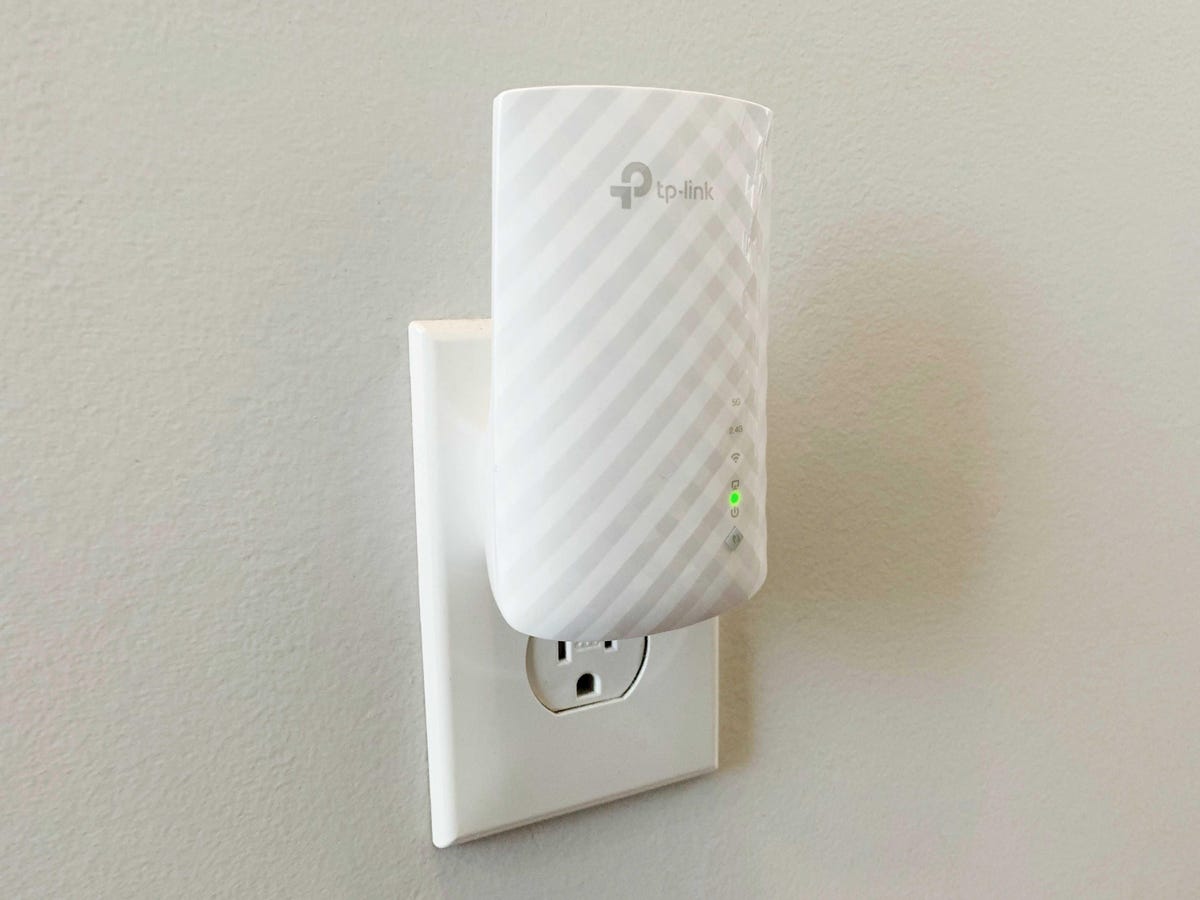Speed Up That Laggy Wi-Fi to Make Working From Home Easier
[ad_1]
This tale is part of Residence Ideas, CNET’s selection of useful suggestions for receiving the most out of your residence, inside and out.
The outbreak of the COVID-19 pandemic considerably improved our get the job done practices. Functioning at property and spending much more time online grew to become the norm, and this intended trustworthy and fast Wi-Fi became a requirement. Even now, two years later on, house net connection is as essential as at any time thinking of lots of folks nonetheless get the job done from household quite a few days a 7 days.

In simple fact, a June 2022 survey from McKinsey observed that 58 p.c of Us residents have the prospect to work from dwelling at the very least a person working day a 7 days. With vital team meetings and presentations going on remotely, the past point anyone wishes to have to offer with is a spotty network and a Wi-Fi signal that isn’t up to snuff.
The good thing is, you’ve acquired possibilities. Even if you really don’t know substantially about your router’s configurations or the finest way to adjust them, there are nevertheless some effortless techniques you can get to ensure that your speeds are as fast as attainable. Let’s wander by means of them and see if we are unable to pace matters up for you. (For far better online, check out out our recommendations of the greatest ISPs, routers, mesh routers and Wi-Fi extenders you can acquire).
Browse extra: Discover Free Wi-Fi Any place You Go. This is How
1. Run some online velocity assessments
If you are heading to make improvements to your property community, then you can want to do so from an educated posture. The very best way to get there is to operate some velocity checks to get a great feeling of any weak hyperlinks in your Wi-Fi connection — and there are loads of absolutely free providers on the world-wide-web that’ll support you do just that.
Amongst your choices, the Ookla Speedtest is the most commonly applied and the 1 I might propose beginning with. It features an abundance of throughout the world servers, which allows you pick from many close by choices to measure the velocity of your link. And, like most velocity assessments, it truly is also actually quick to use — just click the major “go” button and wait about a moment.
From there, you will get a look at the current add and obtain speeds for whatever machine you’re running the speed check on, furthermore the ping, which is a latency measurement of how extended it will take facts to vacation back and forth to whatever server you are testing with.
Start by focusing on the obtain and upload speeds. Operate a few of tests at a time in many spots throughout your residence where you’ll be functioning and ballpark the average to get a perception of how your speeds hold up. If you happen to be seeing down load speeds that are less than fifty percent of what your internet approach will allow for, or if your upload speeds are dramatically decrease than your down load speeds, then that may well be a location the place you could enhance things.
As for the latency, you should not need to have to be concerned much about it unless of course you’ve bought a whole lot of units running on your community, or if you might be sharing bandwidth with loved ones members or roommates. In that case, run some tests whilst your roommate is on a FaceTime get in touch with or although your young ones are playing Fortnite — that’ll give you a fantastic perception of how their action might be impacting your have speeds. If that ping variety looks to be jumping, there are some fundamental methods you can acquire, but the best matter to do if you can is to independent that facet website traffic from your have. A lot more on that in just a bit.
Read extra: Best World wide web Pace Exams of 2022: Here is How Rapidly Your World wide web Seriously Is
2. Move your workspace or router
If you’re able to work in close proximity to your router, then a wired Ethernet connection to your computer is the best way to ensure that you’re getting the fastest speeds. But if that’s not an option, you might have to work in a room where the Wi-Fi signal isn’t as strong as you need. That happens when you’re too far from the router, or because there are too many walls or obstructions separating you from it.

A simple, inexpensive plug-in range extender like this one from TP-Link might be all it takes to boost a better signal to your home office.
Ry Crist/CNET
Before you buy anything, the first thing you’ll want to try doing is repositioning your router to strengthen the connection. For the best results, you’ll want to keep it out in the open — ideally as high up as possible. If you can reposition the antennas, try experimenting with that, too. Staggering them at different angles might be all it takes to boost your speeds. If the router is downstairs and you’re trying to boost the signal upstairs, try moving one or more of the antennas to a horizontal position. Antennas like those tend to put out their Wi-Fi signal at a perpendicular angle, so a horizontal antenna will put out a vertically-oriented signal that might be more likely to make it upstairs.
There’s one last thing to check before you buy anything, and that’s your router’s channel. The 2.4 and 5GHz frequency bands that your router uses to send its signals are each divided into multiple channels, just like the TV channels that you can pick up with an antenna. Your router uses a single channel at a time, and if you’re using the same one as a neighbor, for instance, then that interference might slow your connection.
To change that channel, navigate to your router’s settings on your computer. The best options are channels 1, 6 and 11, which don’t overlap with one another, but your router might also have an “auto” setting that can determine the best channel for your situation.
3. Get a Wi-Fi extender (or upgrade your router)
If none of that works, then it might be time for a hardware upgrade. Plug-in range extenders are one option, and you’ve got plenty of options that don’t cost very much. Your best bet is to pick one made by the same company that makes your router. It doesn’t need to be blazing fast — most of them aren’t — but as long as it can keep your speeds up above 50Mbps or so, you should be able to use the web like normal, including video calls.
Read more: The Best Wi-Fi Extender for Almost Everybody
That’s the standard I used when I recently tested out a handful of plug-in range extenders at my own home. The one that performed the best was the TP-Link RE505X, with sustained speeds of about 140Mbps or more throughout my entire 1,300 sq. ft. home. Available now for $90, it’s easy to use, it supports Wi-Fi 6, and it works well. For something even cheaper, consider the TP-Link RE220. It doesn’t support Wi-Fi 6, but it keeps speeds up above 70Mbps throughout my home, and only costs $25.
Another option would be to upgrade your router altogether. If it’s range you’re concerned with, then you’ll want to move multipoint mesh routers that come with range-extending satellite devices right to the top of your list. Again, you’ve got lots and lots of options to choose from — and we’ve tested and reviewed several of the latest systems to hit the market. Among them, I like the $230 TP-Link Deco W7200 the best, but similar systems from Asus, Eero, Netgear, and Nest are worth a look, too.
Don’t need a mesh router, and just want something quick, easy and affordable? The Asus RT-AX86U is a solid upgrade that costs $250, and for more of a bargain, you could consider the TP-Link Archer AX21, which costs less than $100. Both support Wi-Fi 6 and performed well in my at-home tests.
4. Prioritize your work traffic
So let’s go back to that scenario where your kids are home from school streaming Disney Plus and playing Fornite while you’re trying to work. There are a couple of things you might be able to do to keep their internet traffic from impacting yours.
The first, and easiest, is to make sure that you’re using different frequency bands. Most routers operate both the 2.4 and 5GHz bands, and many will split those bands into two separate networks that you can connect with. The 5GHz band is faster, while the 2.4GHz band offers better range. Dedicating one of those two bands to work-related traffic only will return a much better experience than sharing a band with your family or housemates.
The Netgear Nighthawk RAX120 is one of many routers that includes a Quality of Service engine capable of prioritizing specific types of web traffic, including important work-related services like Skype.
Screenshot by Ry Crist/CNET
Most routers can also put out an optional guest network, sometimes with max speed settings that can help keep your kids from eating up too much bandwidth. Some will even let you run the network on a schedule, in case you want to cut them off entirely at certain hours. Similarly, your router might be able to schedule access for specific devices or a group of devices.
Another feature worth looking for is Quality of Service, which allows some routers to prioritize traffic to specific devices or for specific purposes. For instance, the Netgear Nighthawk RAX120 lets you specify that video calls are a higher priority than gaming traffic. If it’s an option with your router, it’s worth experimenting with.
More Wi-Fi tips
Having fast internet speeds and reliable connectivity is more important than ever for remote workers. For all of your home internet questions, read these broadband, router and Wi-Fi tips next:
[ad_2]
Source link








